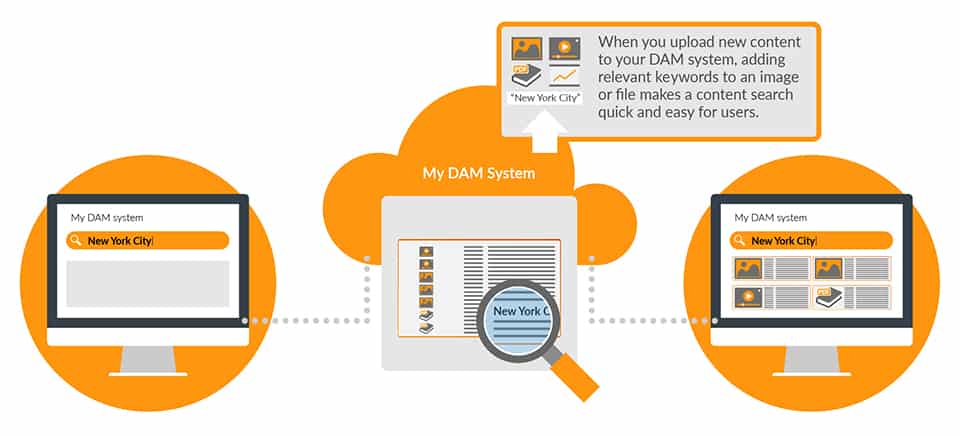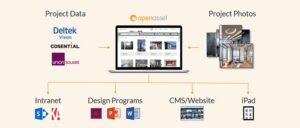What are Digital Assets?
May 20, 2019

For over a hundred years, businesses have needed to catalog and store documents. With the birth of the digital age, companies looked to technology for alternatives to the cabinets taking up precious office space. The first ‘digital asset management’ systems began to appear in the 1990s.
Aside from the environmental impacts of paper documents and the space required to store them, going digital is a best practice for any 21st-century company.
Great, let’s make the change. But what are digital assets?
Digital assets are files created electronically, and that exist as data held on a digital storage drive or computer system. However, items made by hand can become a digital asset; a painting or handwritten notes become digital assets if they are scanned and uploaded to a computer.
Unlike the days of paper document filing, there are many types of digital assets that need to be managed, with each asset type having a specific purpose for which it is used.

Examples of digital assets include:
- Photos
- Videos
- Design files
- Word documents
- PDFs
- Company branding
- Presentations
- Marketing content and collateral
Digital assets aren’t restricted just to these file types; they can also include data packages, user data, user accounts, cryptocurrency tokens and many other sensitive or high-value digital files.
As the business world continues to move to true paperless working, the amount of digital content that needs management continues to rise rapidly. This rise in volume will mean employees need instant and easy access to the assets they need to do their daily work.
What’s the most efficient way to manage my digital files?
Managing your digital content can be done using a Digital Asset Management (DAM) system in the ‘cloud’. A good DAM will integrate with other platforms and systems to enable seamless working.
Why is it so important to manage digital content efficiently?
A digital asset may not be a tangible item you can hold in your hand, but that doesn’t mean it’s worth less than something in the physical world.
All assets have material and underlying value. Think about photos. A photo, whether purchased from a stock site or taken by a professional photographer, had a purchase or production cost attached to it. That photo might then be used in a design file to create sales content. That piece of content might lead to revenue-generating business relationships. The value of such an asset can be exponential.
Efficient cataloging of digital assets provides another vital value dimension. Everyone has, at some point, wasted time looking for an important asset on a network drive. After hours of searching, you find it in a sub-folder of a proposal from 6 months ago. “Why is it in that folder?!” you mutter, exasperated.
Hard to find assets mean lost working hours. Lost assets mean time and money spent recreating or reacquiring them. A Digital Asset Management system removes this risk.
A Digital Asset Management system makes it easier to find my content?
Yes. And this brings us to another important element of managing digital assets – ’metadata’.
You’ve made a move into the world of Digital Asset Management; all of your assets are now in one place. However, unless you label each file with accurate information, searching for assets and determining their suitability for your needs is difficult.
To help users find the right images, you need to add ‘metadata’. Every file held in the DAM needs to contain this information.
Metadata is essential descriptive information and keywords contained within a digital file. It gives you insight into the contents of the file and enables advanced search. Metadata can include:
- Description of contents
- Purpose
- Location
- Photographer
- Copyright
- Themes
- Project information
- Who created the file
- Technical information (e.g. camera spec, DPI, colour profile, file size, etc.)
- Colour
Metadata might even incorporate more ambiguous notions, such as mood or feel.

With robust metadata, you can execute quick and painless searches; this means an asset with a questionable file name is no longer a problem to find.
Taxonomy
No, we’re not talking stuffed owls (that’s taxidermy); taxonomy is about defining the keyword and metadata information you’re going to tag your files with.
Planning your asset taxonomy is crucial; it will affect how effective your DAM is for users. You will need to decide what information is logical for your company to label your files with, and balance that with the requirements of users across your business.
With OpenAsset, project and file taxonomy is split into keywords and information fields. Keywords help users find assets, whereas fields are long-form entries designed to store more detailed information about assets.
Keywords are logical, searchable terms used to tag projects and files. They help users to refine searches and create selections of relevant images. For example, a user creating an architectural proposal requiring ‘exterior’ photographs of ‘skyscrapers’ in ‘New York City’ would use those as keywords.

Fields are text-based entries designed for longer descriptions or information that is unique to a project or file. Examples of typical fields would include descriptions, codes and completion dates for projects, or copyright holders and captions for files.
If your team is struggling with file management and control, a Digital Asset Management system might be the answer for you. OpenAsset is designed specifically for AEC and Real Estate firms – get in touch with us and we’ll do our best to understand your needs and find the right solution for you.





